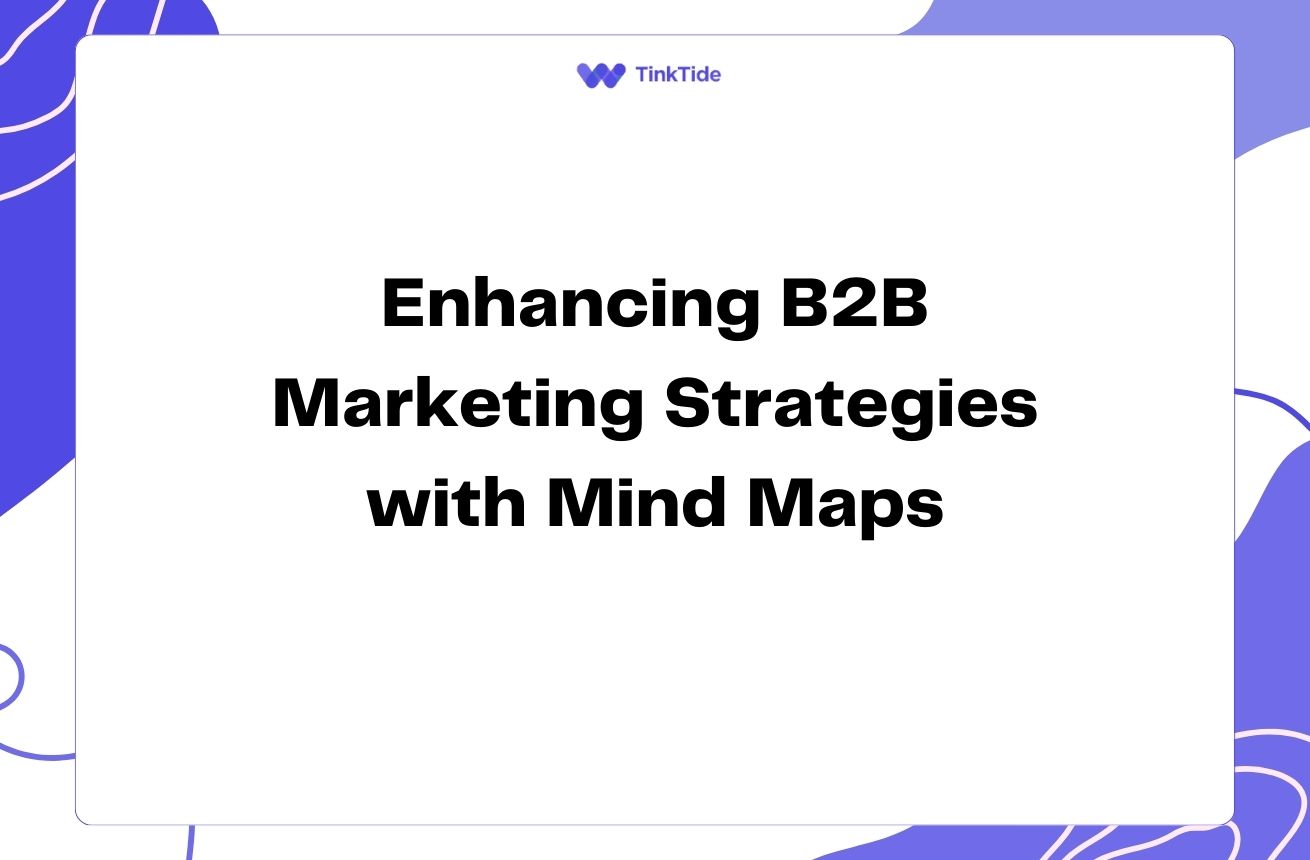Unleash Business Growth with Mind Mapping Strategies
The Power of Mind Maps in Business
Mind mapping is a powerful visual tool that can revolutionize the way you approach business development. By creating a visual representation of ideas and concepts, mind maps help you organize thoughts, identify connections, and generate innovative solutions.
In the fast-paced world of business, the ability to quickly capture and organize ideas is crucial. Mind maps allow you to do just that, providing a flexible and intuitive way to brainstorm, plan, and strategize. By leveraging mind maps, you can unlock new possibilities for growth and streamline your decision-making processes.
Research has shown that visual thinking techniques like mind mapping can improve memory retention by up to 32% compared to traditional note-taking methods. This enhanced recall can be a game-changer when developing and implementing business strategies.
Key Benefits of Mind Mapping for Business Growth
Mind mapping offers numerous advantages for businesses looking to expand and innovate. Here are some key benefits:
- Enhanced creativity and idea generation
- Improved problem-solving capabilities
- Better organization and clarity of thoughts
- Increased productivity and efficiency
- Effective communication of complex ideas
Creating Effective Mind Maps for Business Development
To harness the full potential of mind mapping for your business, it's essential to create effective and meaningful maps. Start by placing your main concept or goal at the center of the map. From there, branch out with related ideas, using colors, images, and keywords to enhance visual impact and memorability.
Use digital mind mapping tools to collaborate with team members in real-time, allowing for seamless idea sharing and refinement. These tools often offer features like cloud storage and integration with project management software, further enhancing their utility in a business context.
Remember to keep your mind maps clear and concise. Avoid cluttering them with too much information, as this can defeat the purpose of visual clarity. Instead, focus on key concepts and use sub-branches to delve into details when necessary.
Applying Mind Maps to Different Business Areas
Mind maps can be applied to various aspects of business development. Here are some specific areas where mind mapping can drive growth:
1. Strategic Planning: Use mind maps to outline your company's vision, mission, and long-term goals. This visual approach can help identify potential roadblocks and opportunities more easily than traditional linear planning methods.
2. Product Development: Map out features, user stories, and potential improvements for your products. This can lead to innovative ideas and help prioritize development efforts.
3. Marketing Campaigns: Create comprehensive mind maps to plan and execute marketing strategies, including target audience analysis, content creation, and distribution channels.
Integrating Mind Maps into Your Business Workflow
To maximize the impact of mind mapping on your business growth, integrate it into your daily workflow. Encourage team members to use mind maps for brainstorming sessions, project planning, and problem-solving exercises.
Consider implementing a knowledge management system that incorporates mind maps as a central component. This can help preserve institutional knowledge and facilitate easier onboarding of new team members.
Regular review and updating of your mind maps is crucial. As your business evolves, so should your visual representations of strategies and ideas. Set aside time periodically to revisit and refine your mind maps, ensuring they remain relevant and valuable to your growth efforts.
Mind Mapping Best Practices for Business Growth
To get the most out of mind mapping for your business, follow these best practices:
- Start with a clear central idea or goal
- Use colors and images to enhance visual appeal and memory retention
- Keep branches concise, using single words or short phrases
- Regularly review and update your mind maps
- Encourage collaboration and input from team members
- Use digital tools for easy sharing and real-time collaboration
Overcoming Common Mind Mapping Challenges
While mind mapping is a powerful tool, some businesses may face challenges in implementation. One common issue is resistance to change from team members accustomed to traditional planning methods. Address this by providing training and highlighting the benefits of visual thinking.
Another challenge can be maintaining consistency across different mind maps within an organization. Establish guidelines for creating and sharing mind maps to ensure a standardized approach that aligns with your business goals.
Lastly, avoid the temptation to over-complicate your mind maps. Remember that the goal is clarity and insight, not complexity. If a mind map becomes too cluttered, consider breaking it down into multiple, more focused maps.
Measuring the Impact of Mind Mapping on Business Growth
To ensure that mind mapping is contributing to your business growth, it's important to measure its impact. Track metrics such as time saved in meetings, the number of new ideas generated, and improvements in project completion rates.
Conduct regular surveys or feedback sessions with team members to gauge the effectiveness of mind mapping in their work. Use this information to refine your approach and identify areas where mind mapping can be further leveraged for growth.
Consider using project management tools that integrate with mind mapping software to track the progression of ideas from conception to implementation. This can provide valuable insights into the ROI of your mind mapping efforts.
Address common questions
Here are some frequently asked questions about using mind maps for business growth:
How can mind mapping improve decision-making in business?
Mind mapping enhances decision-making by providing a visual overview of all factors involved. It helps identify connections between different elements, highlight potential risks and opportunities, and organize complex information in a more digestible format. This visual approach can lead to more informed and balanced decisions.
What are some good mind mapping tools for businesses?
There are several excellent mind mapping tools available for businesses, including MindMeister, XMind, Coggle, and MindManager. These tools offer features like real-time collaboration, integration with other business software, and cloud storage. Choose a tool that aligns with your specific needs and workflow.
How often should we update our business mind maps?
The frequency of updates depends on the nature of your business and the specific purpose of each mind map. Strategic mind maps should be reviewed quarterly or bi-annually, while project-specific maps may require weekly or monthly updates. Establish a regular review schedule and be prepared to make adjustments as needed based on new information or changing circumstances.
Can mind mapping replace traditional business planning methods?
While mind mapping is a powerful tool, it's best used in conjunction with traditional planning methods rather than as a complete replacement. Mind maps can enhance and streamline many aspects of business planning, but they should be integrated into a comprehensive approach that includes detailed analysis, financial projections, and formal documentation when necessary.
How can we encourage team adoption of mind mapping techniques?
To encourage team adoption, start by demonstrating the benefits of mind mapping in your own work. Offer training sessions or workshops to familiarize team members with the technique. Integrate mind mapping into regular meetings and brainstorming sessions. Highlight success stories and improvements resulting from mind mapping to build enthusiasm and buy-in from the team.
Provide additional resources
The Mind Map Book
A comprehensive guide to mind mapping techniques by Tony Buzan
MindMeister Blog
Regular articles and tips on mind mapping for business
Harvard Business Review: The Power of Visual Thinking
Insights on the benefits of visual thinking in business
Coursera: Visual Thinking Strategies for Business
Online course on applying visual thinking to business challenges
Mind Mapping for Business Excellence
YouTube video tutorial on advanced mind mapping techniques for business
Summarize key takeaways
Mind mapping is a powerful strategy for developing and growing your business. By visually organizing ideas, enhancing creativity, and improving decision-making processes, mind maps can drive innovation and efficiency across various aspects of your operations.
Remember to integrate mind mapping into your regular workflow, encourage team adoption, and consistently review and update your maps. With practice and dedication, mind mapping can become a valuable tool in your business growth arsenal.
Start implementing mind mapping techniques today to unlock new possibilities for your business. Experiment with different approaches, measure the impact, and refine your strategies to maximize the benefits of this versatile visual thinking tool.
Supercharge Your Business Growth with Mind Mapping
Ready to transform your business planning and decision-making? Try our intuitive mind mapping tool and see the difference it can make.
Start Your Free Trial

